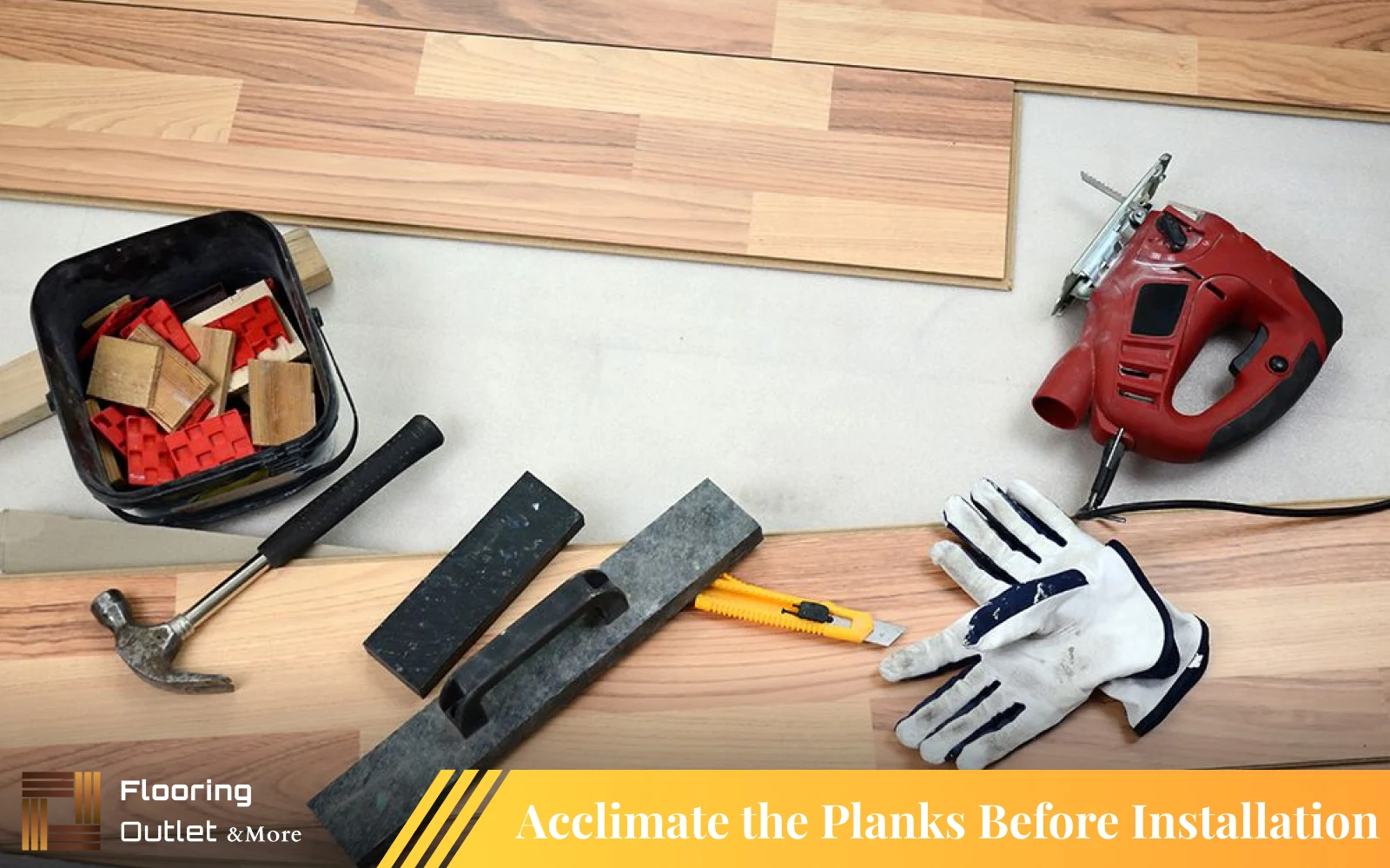Common Mistakes When Installing Vinyl Plank Flooring

According to interior experts, consumers have preferred vinyl plank flooring based on durability, ease of maintenance, and quality designs. Suppose you adhere to the vinyl plank flooring installation guidelines and avoid the Common Mistakes When Installing Vinyl Plank Flooring. In that case, you are bound to get a stunning, sturdy, and brilliant floor that can give a standard elegance and resilience to the floor of your house.
Getting to Know the Advantages Can Help You Avoid Common Mistakes When Installing Vinyl Plank Flooring
A common mistake that homeowners make is not being fully aware of the advantages of vinyl plank flooring, which is very crucial in avoiding Common Mistakes When Installing Vinyl Plank Flooring:
- Waterproof and moisture-resistant
- Durable and scratch-resistant
- Easy to clean and maintain
- Comfortable underfoot
- Wide variety of styles and designs
- Cost-effective compared to hardwood or tile
- Simple installation process
To start installing luxury vinyl flooring, acclimate planks for 48 hours, prepare the Subfloor, and plan the layout. Mark a starting line, leaving an expansion gap. If needed, install underlayment. Place spacers along the wall, begin the first row with the tongue side facing the wall and ensure planks are tight. Measure and cut the last plank to fit, maintaining the expansion gap. Use a rubber mallet to secure planks. Stagger joints by at least 6 inches in subsequent rows. Remove spacers and install baseboards to cover gaps. Check alignment periodically for a professional finish.
How to install vinyl plank flooring quick and simple
While vinyl plank flooring is one of the easiest floorings to install, several common mistakes can occur during the installation process. Avoiding these pitfalls is crucial for ensuring a successful and long-lasting vinyl plank floor.
Not Preparing the Subfloor Properly
Properly preparing the Subfloor is one of the most critical steps in installing vinyl plank flooring. The Subfloor must be clean, level, and free of debris or unevenness. Failure to properly prepare the Subfloor can lead to a range of issues, such as uneven surfaces, gaps between planks, and even premature wear and tear of the flooring. Remember that Installing vinyl plank flooring on a sloped floor can cause significant problems for you.
Incorrectly Measuring and Cutting the Planks
Accurate measurements and precise cutting of the vinyl planks are essential for preventing Common Mistakes When Installing Vinyl Plank Flooring, achieving a seamless and professional-looking installation. Mistakes in measuring or cutting can result in gaps, uneven edges, and an overall subpar appearance. It’s essential to carefully measure the room dimensions, plan the layout of the planks, and use the appropriate tools, such as a sharp utility knife or vinyl cutter, to ensure clean, straight cuts.
Failing to Acclimate the Planks Before Installation

Like many other types of flooring, Vinyl plank flooring requires a period of acclimation before installation. This means allowing the planks to sit in the room where they will be installed for a recommended period, typically 24-48 hours, to allow them to adjust to the temperature and humidity levels. Failing to acclimate the plank is known as one of the common mistakes when installing vinyl plank flooring. It can lead to issues such as gapping, buckling, or other dimensional changes once the flooring is installed.
Not Using the Proper Adhesive or Underlayment
The type of adhesive and underlayment used can significantly impact the success and longevity of a vinyl plank flooring installation. Using the wrong adhesive or failing to install a suitable one is one of the common mistakes when installing vinyl plank flooring. That can result in problems like planks coming loose, uneven surfaces, or excessive noise.
Rushing the Installation Process
Rushing through the installation steps is one of the common mistakes when installing vinyl plank flooring. It can lead to costly mistakes like gaps, uneven surfaces, and even premature wear and tear of the flooring. Taking the time to properly prepare the Subfloor, measure and cut the planks, and follow the manufacturer’s instructions is crucial for achieving a successful and long-lasting installation.
Neglecting to Leave Expansion Gaps
One of the properties of vinyl plank flooring is that it is designed to expand and contract with changes in temperature and humidity. Failing to leave the appropriate expansion gaps around the room’s perimeter and at any fixed objects, such as walls, cabinets, or door frames, can lead to buckling, cracking, or other issues.
Tips for Avoiding Common Mistakes When Installing Vinyl Plank Flooring
Consider the following tips for preventing Common Mistakes When Installing Vinyl Plank Flooring and ensure a successful installation, also, you can always consider calling Flooring Outlets and More for flooring installation services available in all California
- Thoroughly Prepare the Subfloor
- Measure Accurately and Plan the Layout
- Allow for Proper Acclimation
- Use the Correct Adhesive and Underlayment
- Take Your Time
- Maintain Proper Expansion Gaps
- Establish a Cleaning Routine
Source:




Did you find what you were looking for?